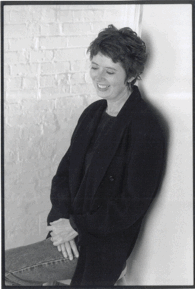|
Requiem |
||
| I. | Introitus | |
| II. | Kyrie | |
| III. | Domine Jesu Christe | |
| IV. | Sanctus and Benedictus | |
| V. | Pie Jesu and Agnus Dei | |
| VI. | Lux Aeterna | |
| VII. | Libera me and The Comforter | |
| VIII. | In Paradisum | |

photo by susan wilson

- Patricia Van Ness -
She is Composer in Residence at First Church in Cambridge, Massachusetts, and has been an invited lecturer at the Harvard University Department of Music and at Boston University's Core Curriculum Program. For more detail, visit www.patriciavanness.com.
- Repertoire -
Van Ness “Requiem”
Building A Choral Work
Over the past twenty years, Boston’s Coro Allegro has developed a reputation for unparalleled choral excellence. Seeking to promote multi-cultural harmony, the group regularly commissions new works from composers of diverse backgrounds.
Patricia Van Ness, who has worked with the group many times in the past, had always wanted to write a Requiem. In 2002, based upon a history of successful collaboration, CA director David Hodgkins, chorus president Willis Emmons and the composer came to a “meeting of the minds,” and her “Requiem” was commissioned. In what Van Ness calls “a spirit of zeitgeist,” renowned baritone Sanford Sylvan was enlisted for the project as well.
Construction begins
Intrigued by Medieval chant and the interval of a perfect fifth, Van Ness’s signature style begins with vocal lines that start on the tonic and move in an arch. She tries to make her melodies as graceful as possible.
As she writes, the composer tells us, she definitely thinks about what singers can and can’t do. Although Coro Allegro is an extremely accomplished ensemble, she placed the tessititura, or vocal range, of the “Requiem” very comfortably in order that the work might be widely accessible. On the other hand, she confesses, she “never leaves enough time to breathe!” The singers must stagger their breathing in order to achieve the true legato of her long lines. After writing the SATB parts, she begins to mix and match colors (see “It’s the Color,” CS, May 04, p. 6).
The orchestration is approached in the same way. After all, says Van Ness, both are about melodic line and chordal interest. (The “Requiem” is scored for two violins, viola, cello, bass and oboe.) She finds the process “all fun, and all difficult” at the same time, but says working with color in this way comes easily, and therefore is especially fun.
The completed work was dedicated to the memory of dancer and choreographer Julie Ince Thompson, a close friend of Van Ness. According to the composer, it had always been her intention to do a Requiem of consolation and, although it had been commissioned long before, the evolution of the piece was profoundly shaped by her friend’s death. During the year she gave herself to write it, Van Ness was moving through the process of grieving.
The chorus walked through this process with her. They did a read-through at the beginning of the summer, when the piece was two thirds finished. As a result of what she heard, and feedback from David Hodgkins and accompanist Darryl Hollister, the work “changed dramatically.” At that point, says Van Ness, she also “turned a corner in her grieving.” The “Requiem” became more joyous, less dark. It was then, for example, that all the soprano voices at the beginning of the piece were added. Modifications continued through the first rehearsal in September, in a very real sense drawing the singers into the creative process.
On October 31, 2004, at the Church of the Covenant in Boston’s Back Bay, Coro Allegro and Sanford Sylvan premiered “Requiem” for chorus and baritone solo by Patricia Van Ness. To listen to excerpts, see below.